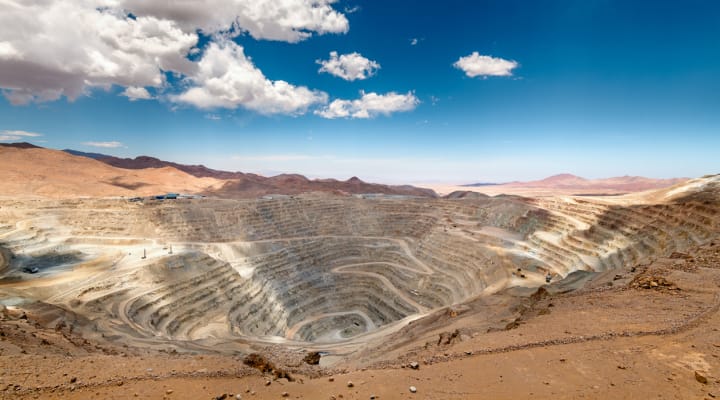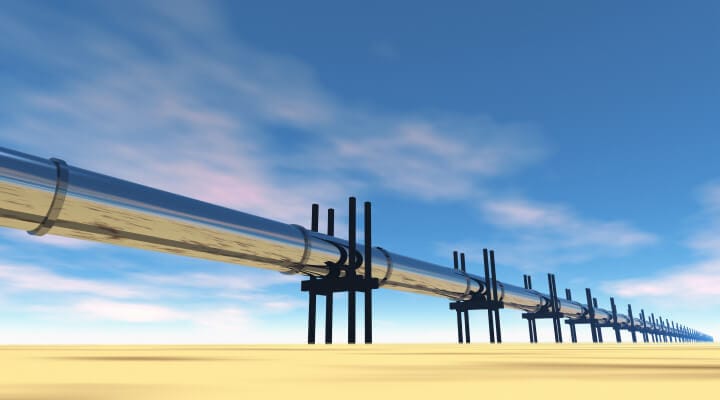
What will the next commodities supercycle look like?
Commodities have never been far from the headlines for the last three years. Surging food prices, spiking energy costs, supply chain issues, and government interventions have all contributed to a sense of nervousness in global commodity markets.
Overlay the clean energy transition and the surge in demand for metals and minerals, and it doesn’t feel like a giant leap to talk up the prospects of a commodities supercycle lasting for the next decade or more.
However, the truth may be a little more complex.
Any market watchers would agree there’s a strong chance for a green-led supercycle in the medium term, but in the short term, it’s difficult to separate the clear price signals with volatility and noise from commodities markets still adjusting after the tumultuous events of recent years.
Goldman Sachs was the first institution to call the start of a “multi-year commodities supercycle” in late 2020. Their recently departed Head of Commodities Research – Jeff Currie – has remained committed to that thesis despite ranging oil prices and a slowdown in global economic demand.
Their research suggests that the underinvestment in supply across key commodities has tipped the markets into supercycle territory, underpinned by a lack of capex in critical metals and minerals like copper and reticence to invest in new upstream oil and gas projects.
There’s no doubt that the underinvestment narrative is true, but is that alone enough to drive the supercycle momentum? Are investors still waiting to be convinced before deploying the much-needed capital?

What is a commodities supercycle?
A commodities supercycle is characterised by an extended period when commodities prices are well above, or even below, their long-term trend. A supercycle generally results in significant price changes in most major commodities and lasts for a decade or more.
Although there’s some debate about how many supercycles there have been in the last century, for the purposes of this article, we’ll talk about two that have occurred since WW2.
The first started sometime in the mid-60s and ended in the late 70s, driven by the end of the Bretton Woods system of fixed currency exchange rates and the devaluing of USD. Then the second began in the early 2000s to the mid-2010s, following China’s admission to the World Trade Organisation, and the large-scale industrialisation and urbanisation of some of the world’s emerging economies, led by China and India.
No two supercycles are the same, but they’re generally preceded by sustained supply-side underinvestment, a lack of spare capacity, and a drawdown of inventories, making commodities markets vulnerable to future demand growth.
The supercycle is then triggered by significant demand event, for example, the stimulus programme of Lyndon Johnson’s ‘Great Society’ in the 60s or China’s admission to the WTO in 2001, where the chronic lack of supply fails to keep pace with surging demand and pushes prices higher.
It could easily be argued that we’re living through a period with many parallels with those previous supercycles.
Even in the decade before the COVID-19 pandemic, investors have been reluctant to commit to the levels of capex investment needed to meet the global appetite for commodities. Investment Managers – Schroders – estimate that capital expenditure in oil and gas and the global mining sectors has fallen by around 40% since 2011.
Capex in the copper industry, a vital metal in the clean energy transition, declined by 44% between 2012 and 2020.

The last ten years have seen lower commodity prices, low interest rates, and a lack of long-term incentives for investing in upstream energy or mining projects. We’ve also seen the rise of ESG and environmental regulation, reducing the attractiveness of investing in many commodities just as the clean energy transition needs to accelerate.
It’s an interesting comparison to look at the last supercycle, which was also driven by a lack of supply and a boom in demand for industrial metals to construct Chinese cities and infrastructure.
If and when it comes, this supercycle may well be because of a similar pattern of underinvestment and then an explosion in demand for metals, this time to enable decarbonisation, EVs and other green technology. However, the difference may be that the global appetite for clean energy resources will make the Chinese supercycle demand feel like a drop in the ocean.
Will history judge the Covid-related stimulus and huge green subsidies, like the $370bn offered by President Biden’s Inflation Reduction Act (IRA), as the catalyst for a supercycle? That’s not yet clear, but there’s no doubt that the clean energy transition should create an environment where a supercycle is eventually inevitable.
The question then becomes not whether we’re in a supercycle but more what a Green supercycle might look like when it is fully underway and how it will distribute across the commodities complex.
A green supercycle
From China’s latest five-year plan to Europe’s Green Deal and the U.S. IRA, governments are ramping up support and spending for the clean energy transition.
President Biden’s plan to decarbonise the power sector by 2035 and have a carbon-neutral U.S. economy by 2050 and China’s ambition to achieve carbon neutrality by 2060 are huge commitments for the world’s two largest economies.
Clearly, the increase in demand for resources linked to decarbonisation outlines the bull case for a new supercycle, led by critical metals and minerals in particular.

EV production alone will increase the demand for copper, lithium, nickel, cobalt and manganese far above current levels. The IEA forecasts that EV battery demand will require 50 new lithium mines, 60 nickel mines and 17 cobalt developments by 2030, a huge challenge for an industry that typically takes 15 years or more to open a new mine.
And therein lies the rub.
Government policy is the catalyst for a massive expansion in demand for clean energy commodities, but the same policymakers also need to reform some of the environmental regulations that are stymieing the capex required to meet the demand.
In the U.S. alone, mining companies must navigate a complex and multi-levelled system that involves multiple agencies and labyrinthine federal, state and local laws. Despite the Biden Administration saying they must prioritise opening new mines, many projects are now mired in local disputes and environmental challenges.
Without urgent reform, supercycle or no supercycle, global economies, particularly in the Western hemisphere, will struggle to meet their commitments to net-zero and energy security.
The concerning move towards deglobalisation could also be a significant drag on the potential for more investment in commodities. Recent supercycles have taken place with a globalised economic backdrop, but nationalist and protectionist policies in Russia, China, India and South America have characterised geopolitics in recent years.
Investors are much less likely to invest capital over the long term in countries where they don’t trust their counterparties.
With the stakes so high for a successful clean energy transition, we need a new commodities supercycle to challenge these barriers to investment. Take copper; equity markets are already pricing in supply deficits for the red metal from 2025 onwards, and there’s a shortage of new mines being developed globally.
The only thing that might address those long-term supply issues would be a decade or more of higher prices.
The next supercycle for fossil fuels
When it inevitably arrives, we could be in uncharted territory with the next commodities supercycle.
Will traditional energy like oil and gas enjoy the same bull run as metals and minerals when much of the capital flows into the clean energy transition?

We’d argue that it’s vital they do because the elephant in the room is that there’s no smooth energy transition without fossil fuels. Transitioning away from oil, coal, and gas should be a global priority, but moving too quickly, without viable alternatives, risks doing even more damage.
And yet, this is the path we’re currently on with a chronic lack of upstream investment in new projects and infrastructure. A balanced commodities supercycle, with higher prices for traditional energy and critical metals, will encourage the investment needed to build the sustainable bridge to net zero.
This next supercycle may also see the emergence of workable carbon capture technology at scale and a global consensus around carbon pricing; both would enable more sustainable use of fossil fuels and provide a compelling narrative for investors to look beyond ESG concerns and provide the necessary capex for traditional energy.
As with any forecasting, it’s easier to identify a supercycle once it’s well underway. It’s especially difficult to differentiate the price signals of a new commodities supercycle from the volatile and nervous markets shocked by a global pandemic, the Russia- Ukraine war, and the new higher inflationary and interest rate environment.
There’s no doubt that commodities have outperformed over the last two years, but we’ll reserve judgment on whether that constitutes the beginning of a new supercycle. What’s clear is that the clean energy transition will dominate the commodities narrative over the long term, and we expect to see unprecedented levels of supply and demand of key resources.
On that basis, the traditional definition of a supercycle may be too simple to describe the profound structural changes we’ll need to see in the world economy if net-zero has any hope of success.
